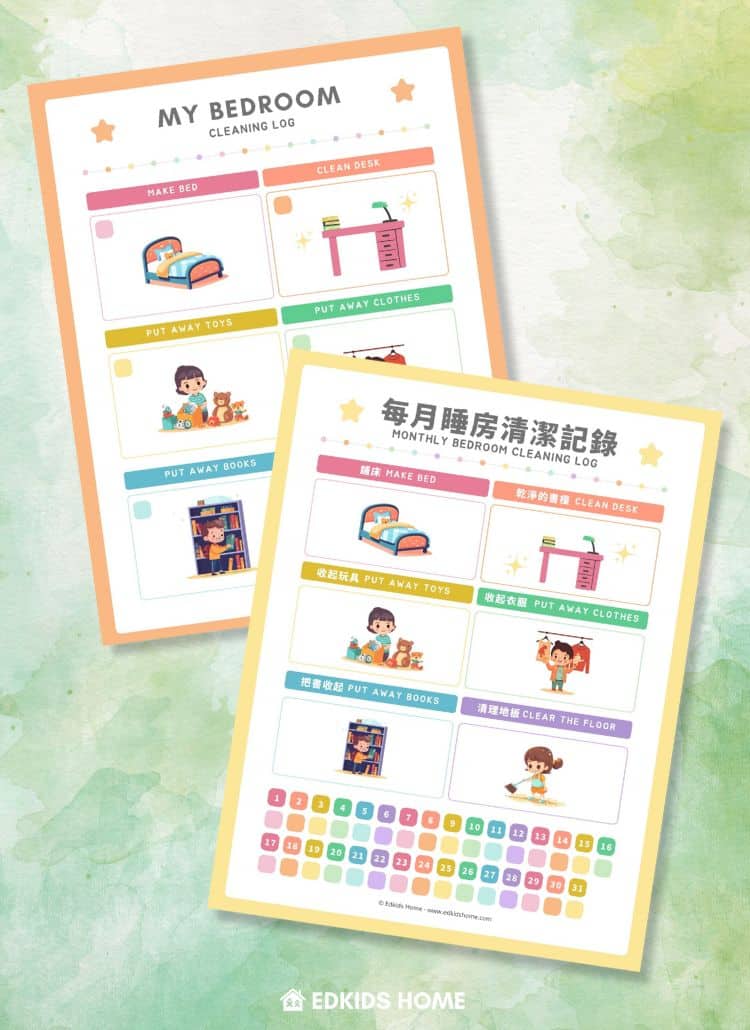
Do you feel like your mornings and evenings are a battle? Do you find it hard to get your kids out the door in the morning or help them stay on track at night? Don't worry! I've got you covered. I've made free printable morning and evening routine charts that can help! With 36 routine cards, you can use my routine chart printables that work for your family. Plus, these charts are available in English, Chinese, and French – so you can rotate languages to keep things interesting!
The morning rush is the most stressful time of the day for us. I get anxious because I don't want them to be late for school, but they don't seem to cooperate. Every day is the same routine, yet they still don't know what to do next!
I rush my kids every morning to wake up and prepare for the day. I need to remind them of every step they need to take, which makes me feel like there must be a better way. After some research, I discovered routine charts for kids and thought this might be a possible solution.
Consistently using the routine chart as a guide helps my kids understand what needs to be done next and mark it as completed. At first, it does need a bit of encouragement and patience from my end. Slowly but surely, I start seeing an improvement in their routines — finally! My morning routines are no longer the worst time of the day for me.
Just like adults, children feel more confident and secure when their daily activities are predictable and familiar.
Head Sart | ECLKC
What are Morning and Evening Routine Charts?
A morning and evening routine chart is a visual representation of the activities that need to work through for each morning and evening.
A morning routine chart typically involves tasks such as:
- Getting out of bed
- Making their bed
- Going to toilet
- Brush teeth
- Getting dressed
- Eating Breakfast
- Putting on Sunscreen
- Grabbing their backpacks
An evening routine chart typically involves tasks such as:
- Bath time
- Putting on Pajamas
- Watching TV
- Eating dinner
- Going to the toilet
- Brushing Teeth
- Storytime
- Sleeping time
14 Benefits of Using a Morning and Evening Routine Chart
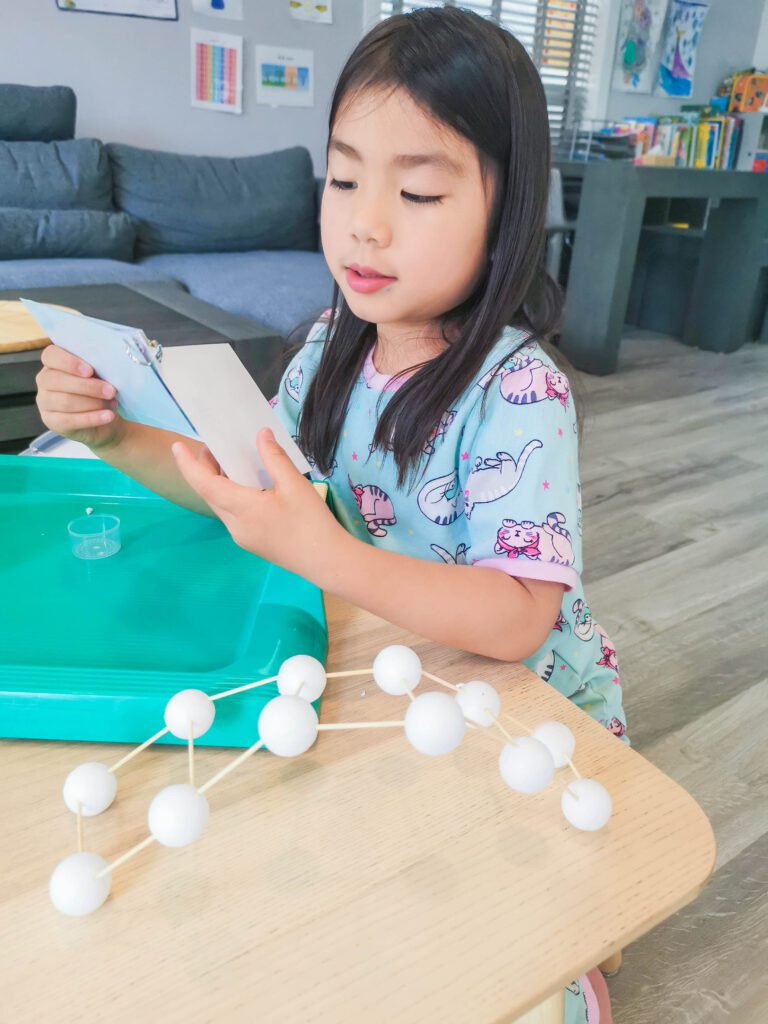
Benefit #1: Provides Structure
As a PMP (Project Management Professional), I've learned that breaking the whole project into individual tasks is one of the most crucial parts of the project life cycle.
It can be so overwhelming to start a project without a plan to execute the project.
The same concept applies to kids.
When you introduce a routine chart to them, it's like giving them a project plan.
It shows them what needs to be done step-by-step so they can focus on completing the task.

Benefit #2: Gives a Sense of Accomplishment
I was a big fan of playing RPGs (role-playing games) when I was a teen.
It feels satisfying whenever I complete a mission when I see the word “done” running across the screen.
This makes me want to achieve more missions.
My daughter gets so excited when she sees a checkmark next to each task she completes.
Seeing those check marks gives her a sense of accomplishment and makes her want to achieve more tasks.
Then I noticed a connection between our experiences. We both enjoy the sense of accomplishment.
It's a win-win situation: the child does the chores as if playing a game, while the parent doesn't have to nag or rush the child to the next stage in their daily routine.
I have created mini cards in my free routine chart printable so that kids can easily track which tasks they have completed.

Benefit #3: Builds Confidence and Independence
As kids see themselves completing the tasks on their routine charts, they'll feel more confident and independent.
This is an essential skill to learn because it will help them grow.

Benefit #4: Helps with Transitions.
Transitions can be challenging for kids, especially if they're tired or hungry.
A routine chart can help smooth those transitions because kids will know what will happen next.
For example, if it's time to transition from playing to dinner time, you can tell your child to look at the routine chart and find the next task.
This will help them start to wind down from playing and prepare for dinner.

Benefit #5: Teaches Responsibility
As kids complete each task on their routine chart, they also learn to be responsible.
They're learning to take care of themselves and their belongings.

Benefit #6: Reduces Stress and Anxiety
It would be great if we never have to yell at or rush our kids again.
A routine daily chart could improve that.
Not only will your kids anticipate when and what they need to do next, but we as parents could feel more relaxed knowing everything is on track.

Benefit #7: Leads to Quality Family Time
Having a routine chart helps kids know what they need to do. It frees up some time for us as parents.
We can then use this free time to spend with our kids doing things we enjoy.
We can play a game together, read a book, or have a conversation.
This quality time is essential for our kids' development and relationships with them.
Routine charts are beneficial not only to kids but also parents and the whole family.
It's a tool that can help everyone feel more relaxed, organized, and connected.

Benefit #8: Promotes Better Behavior and Prevent Meltdowns
Having a routine chart helps kids understand what is expected of them.
They will know what tasks need to be completed and when to achieve them.
This helps promote better behavior because kids are less likely to act out when they see what's happening.
When kids feel like they're in control of their lives and doing important things, it leads to a more positive outlook on life.

Benefit #9: Expand Kids' Vocabularies and Promoting Literacy.
Another benefit of using a routine chart is that it helps expand kids' vocabulary and promotes literacy.
When kids are constantly exposed to words, they'll start to learn them and incorporate them into their speech.
This is especially beneficial for younger kids when they just learn to read and write.
Through repetition by seeing these words and hearing them in conversations, they'll be more likely to remember them and use them correctly.
This is an excellent opportunity to learn multiple languages with my free printable routine charts.
I usually offer them in various languages, including English, Chinese, and French.


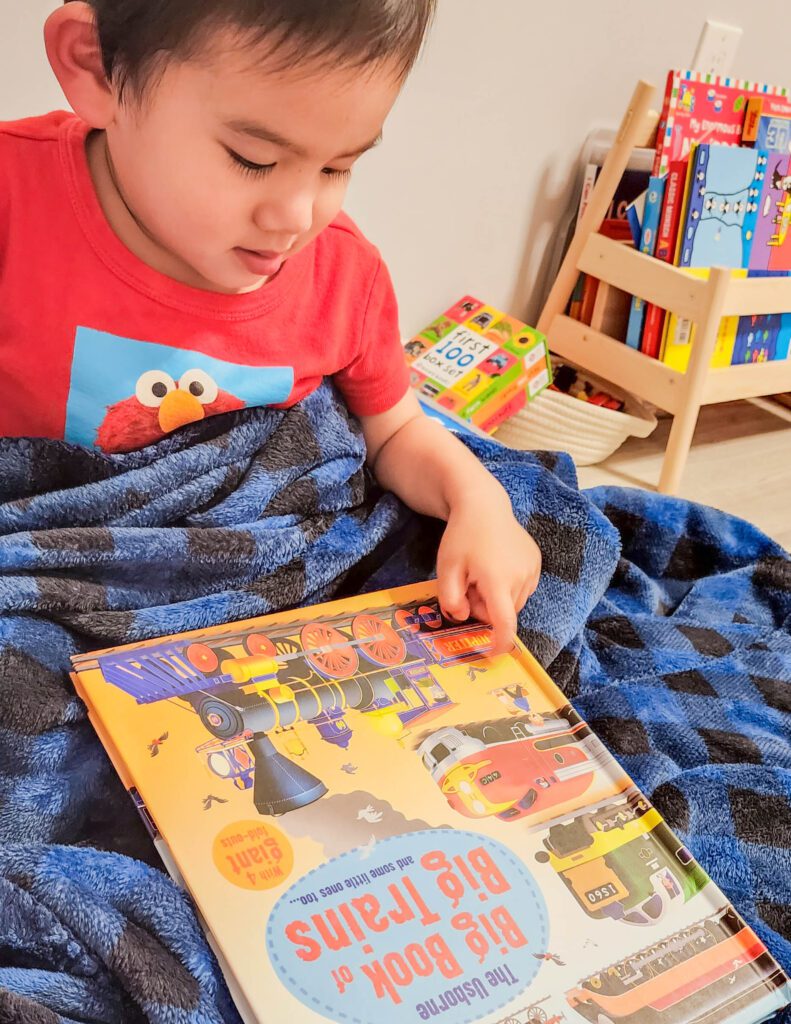
Benefit #10: Establish Healthy Habits.
On average, it takes more than 2 months before a new behavior becomes automatic — 66 days to be exact.
James Clear
As parents, we want our kids to have healthy bodies and minds.
We want them to grow up to be healthy and happy adults.
One of the best ways to help achieve that is to establish healthy habits early on in life.
What’s a better way to create a healthy habit than using a routine chart?
With a routine chart, kids will learn to complete specific tasks at certain times each day.
This will help them develop healthy habits that will carry over into their adult lives.
Some of the benefits of establishing healthy habits include:
- Improved mental health
- Reduced stress and anxiety
- Improved physical health
- Better sleep hygiene
- Improved academic performance
- Improved eating habits
The list goes on and on. As you can see, establishing healthy habits is crucial for the child's development and the whole family's well-being.
So how do you go about establishing healthy habits for your child?
Well, one way is to use a routine chart. With a routine chart, kids can see what tasks they need to complete each day and when they need to achieve them.
This will help them slowly but indeed form healthy habits that will stay with them for life.
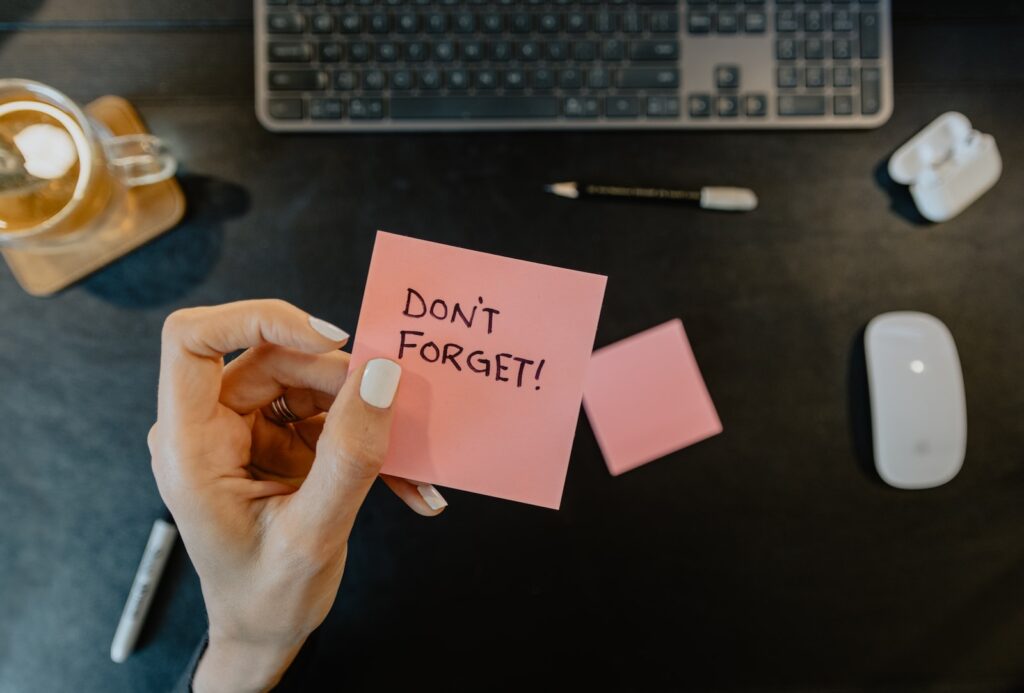
Benefit #11: Acts as a Reminder
Routine charts are a reminder and point of reference for your kids so they don't come to you and ask, “What should I do now?” every five minutes.
This can be extremely helpful, especially when you're trying to get things done around the house or when you need a break from parenting.
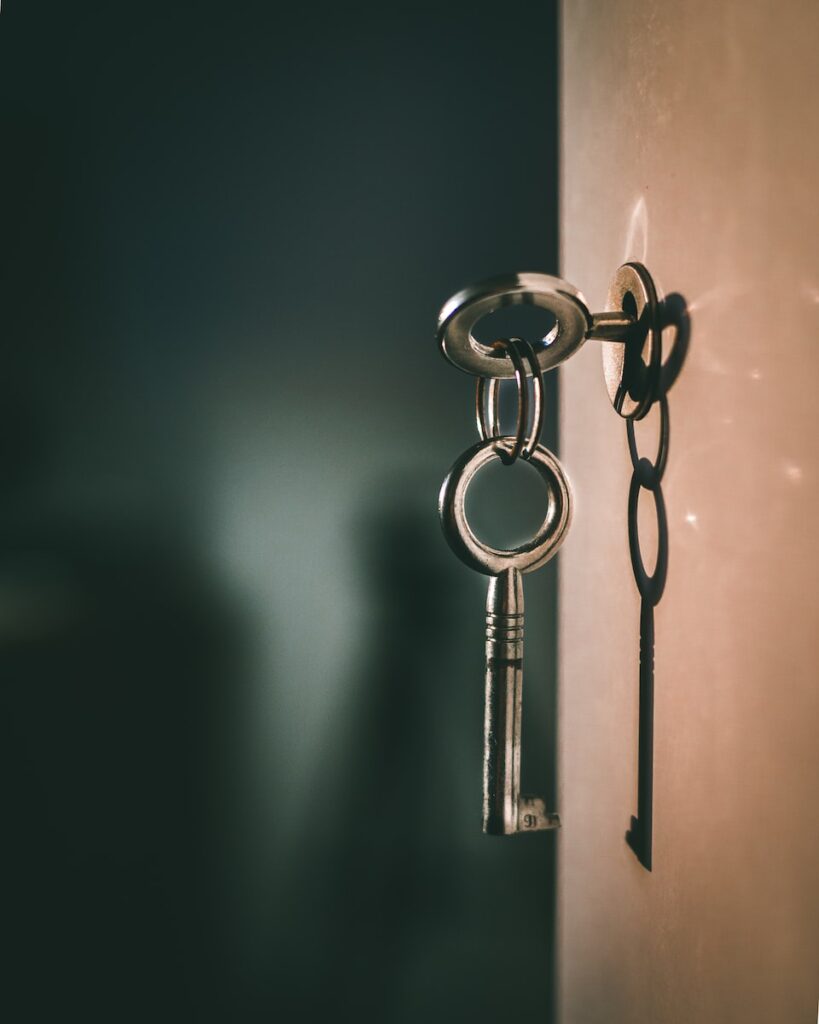
Benefit #12: Gives a Sense of Security
Kids are naturally afraid of various things, including loud noises, the dark, monsters in the closets, or their mother going away for an outing.
The unknowns are terrifying for kids.
A routine chart can give young kids (especially toddlers) a sense of security. It can give them a sense of stability in an otherwise chaotic world.
When everything else in their lives is changing, a routine chart gives them something to hold on to.

Benefit #13: Develops Self-Discipline
One of the most important benefits of using a routine chart is that it helps kids develop self-discipline.
When kids can follow the schedule and complete tasks independently, it instills a sense of responsibility and pride.
It also teaches them how to delay gratification, an essential skill for success.

Benefit #14: Teaches Time Management Skills
When kids complete their tasks on the routine chart, they also learn how to manage their time.
They'll understand that specific tasks take longer to complete than others.
They'll also learn how to pace themselves to complete all the tasks on their chart.
How to Set Up the Free Printable Morning and Evening Routine Charts?
Materials:
- Free morning and evening routine charts
- Laminator
- Laminator pouches
- Paper trimmer or scissors
- Velcro dots
- White card stock paper
- Glue stick
Instructions:
Step 1 – Download
To start, you will have to download these free printable morning and evening routine charts.
Step 2 – Store
Once you have downloaded the file, back up the file in a secure location (i.e., External hard drive, cloud storage, etc.)
Step 4 – Open
Open the files with Adobe PDF Reader. You can download it for free.
Step 5 – Print
After you open the file via Adobe PDF Reader, you can print the file by clicking on the “Printer” icon. Make sure it will print in landscape mode.
I recommend using white card stock for the best result.
Step 6 – Laminate
Insert each sheet using a laminator pouch. Then, laminate them using a laminator.
I like using five mil laminator pouches for heavier weight and extra durability, but they may split open easily. To prevent that, you can glue the printable inside the pouches using a glue stick for security.
Step 7 – Cut
Cut along the gray lines of the cards and mini cards (suns and stars) of the routine chart printable. Also, cut the printables on which you will place the mini cards.
You can use a paper trimmer or a pair of scissors for cutting.
Step 8 – Stick Velcro dots.
Stick a velcro's rough side (hook) inside each square of the printable charts (shown in the above video).
Stick a velcro's soft side (loop) behind each card and mini card.
*Note* Ensure you place each velcro dot in the middle.
Step 9 – Present
Your morning and evening routine chart printable is ready! It is time to present them to your kids.
How to Use the Morning and Evening Printable Charts to Help Your Kids Get into a Routine?

Although it may be challenging to initially introduce morning and evening routine charts to your kids, it can be done successfully with time and patience. Before teaching our kids the morning and evening routine charts, we should review them verbally, frequently mentioning them to familiarize them with the idea.
Here are the steps on how to introduce the routine charts printable to your kids:
1. Explain the Purpose of the Morning and Evening Routine Charts to Your Kids.
If your kids are younger, simply tell them that the chart will help them establish healthy habits is probably enough explanation.
You might say, “This chart will help you remember to brush your teeth every morning and evening.”
If your kids are old enough, you can also explain why having a routine is essential. You can tell them that it will help them be more productive, feel happier, and get better sleep. Let them know that it will help them develop healthy habits and that it's something to help them stay organized.
2. Show Your Kids How the Morning and Evening Routine Chart Works.
Show your kids the cards and ask them what they think they mean. Allow them to see and touch the cards, which will prevent them from wanting to pull them down later. You can then ask what tasks need to be completed each day and in what order they should be completed.

There are 36 routine cards in various languages. This is also a great way to utilize them as flashcards for learning vocabulary.
If you have kids who are too young to read, you can still use the routine chart by pointing to each card as you complete the task.
3. Let Your Kids Help Make Their Morning and Evening Routine Charts Printable.

Your kids should feel like it's their chart, not yours. This will make them more likely to stick to it in the long run.
After that, you and your kids will figure out which routine cards are necessary for their morning and night routines and in what order.
After you've decided, put each step with the routine cards and attach them to the morning and evening routine charts.
If your kids are younger (1-3 years old), you might need to help them with this step. For example, you can say, “First, we wake up and get dressed. Then, we eat breakfast. After that, we brush our teeth.” You can also point to each item on the chart as you explain it.
If your kids are older (4+ years old), they should be able to understand this step independently. However, you can still review it with them to ensure they know what's expected of them.
Older kids might also benefit from hearing your reasoning for why specific tasks need to be completed in a particular order. For example, you can explain that brushing their teeth before eating breakfast is important to have a clean mouth.
4. Explain the Printable
Explain that the goal is to complete all of the chart tasks daily. You can tell them that it might not always be possible to do everything on the chart, but that's okay. The important thing is to try their best.
Finally, let them know they can ask for help if needed. This will prevent your kids from feeling overwhelmed or discouraged.

What is the purpose of the above printable? This is where mini cards (sun and star mini cards) may remain before completing tasks. The tiny cards are used to mark which routine has been completed.
The “sun” mini cards are used for the morning routine chart, and the “star” mini cards are used for the evening routine chart.
5. Hang the Morning and Evening Routine Charts Together.

Hang the routine charts where your kids can see them and allow them to help choose their location. This will ensure they use the routine chart!
It's also a good idea to put the chart at their level. This way, they can reach it and see it without having to ask for help.
You might want to create separate charts for each if you have multiple kids. This way, they can customize their chart to fit their routine.
You may print out as many copies of the routine charts as you need if your kids have more than ten tasks to complete during the mornings and evenings. For example, some activities might occur on the upper floor and others downstairs in the morning.
As a result, I would make two copies of the morning routines chart. On the top floor, only one copy of the first-morning routine chart will be seen, while the other is posted on the main floor for easy reference.
6. Encourage Your Kids to Follow the Morning and Evening Routine Charts
Consistency is key when it comes to establishing healthy habits. For example, you can say, “Remember to brush your hair after you get dressed!” while pointing to the routine chart and the hairbrush. As kids become more independent, adults can transition to new tasks and eventually phase out reminders! If they slip up, don't get angry or frustrated – just calmly correct them and have them try again.
Here are more tips for executing the morning and evening routine charts for your kids:
Break it down into smaller components
If your child is finding it challenging to complete a task, like getting ready, break the process into smaller goals they can achieve. For example: brush teeth > wash face > put on face lotion.
Always remain positive in your actions and words.
Remember to praise the effort, not just the result. For example: Instead of “Good Job,” you can say, “This is a great start.”
Add music:
Music helps kids know what to expect and can make routine more fun! Try listening to a brushing teeth song during the brushing teeth routine. I like to find a two-minute tune that indicates the ideal duration of tooth brushing.
Here is a Youtube video I recommend for the morning routine: 早上好 Good Morning
Be Realistic of Time and Priorities
Sometimes kids don't follow a routine because it is too stressful to do so within the given time frame.
Do a thorough walkthrough to see exactly how long everything takes. If it takes longer than expected, go back and correct it.
Use other types of concrete visual cues:
The use of visual timers, sand timers, alarms, clocks, watches, and calendars assists in the creation of a consistent daily routine.
7. Track Your Kid's Progress
Create a visual calendar that you can cross off each day to complete all the tasks on the morning and evening routine charts. This will help kids track their progress and feel a sense of accomplishment as they see how many days in a row they've stuck to their routine.
Guide to create a visual calendar for your kids
5. Reward Your Kids
Once your kids have a certain number of days to complete all the tasks on their morning and evening routine charts, you can reward them. For example, you could give them a gold star every five days they complete their morning and evening routines.
FAQ on Free Morning and Evening Routine Charts Printable

What Age Is Suitable for This Free Morning and Evening Routine Chart?
You can start presenting this free routine chart printable for kids beginning at 18 months old.
Where to Put Your Visual Morning and Evening Routine Charts?
Tip: Keep the routine charts at your kid's eye level in a high-traffic area
Morning Routine Chart
Typically, you should place your kids' morning routine chart on their bedroom walls. You may also hang it in the bathroom or common area if that's where they do most of their reading each day.
Evening Routine Chart
Your kids' bedtime routine chart should be placed in their bedroom or near their bed. It's helpful to put the visual chart where they can see it so they know what's coming next in the sequence.
Here are some additional locations where you might want to include printable routine charts:
- On the fridge (for mealtime routines)
- In the bathroom (for self-care and hygiene routines)
- Hallways (for routines where your kid will encounter this wall)
- Play areas, playrooms, etc. (for playtime routines)
- By the door (leave for school/daycare routines)
If you want your routine charts to be portable, consider putting them on a ring or in a binder. This way, you can take them with you when travelling or put them away when the company comes over.
Are the Routine Charts Customizable?
Yes! There are 36 routine cards available to adjust which tasks can go accordingly in both morning and evening routine charts. You can customize it to fit your family's needs.
Are These Routine Printable Charts Free?
Yes! They are free. You can download the morning and evening routine charts printable.
What Are Other Languages Available for These Routine Charts?
The morning and evening routine charts are available in English, Chinese (Cantonese, Traditional, Simplified, Pinyin, Zhuyin), and French.
My kids are in a French immersion school, and we also speak Cantonese Chinese at home. As a result, I made three copies of the cards and rotated them from time to time.
Are These Routine Charts Magnetic?
You can use magnetic dots instead of velcro dots and stick the morning and evening routine charts on a fridge, whiteboard, or magnetic base.
How Many Routine Cards Are Available? And What Are They?
There are 36 free routine cards available.
Here are the tasks:
- Wake Up
- Make Bed
- Go to Bathroom x2
- Wash Hands x2
- Brush Teeth x 2
- Wash Face x2
- Get Dressed
- Brush Hair
- Eat Breakfast
- Pack Backpack
- Put on Jacket
- Go to School
- Eat Snack
- Play
- Take a Bath
- Put on Pajamas
- Eat Dinner
- Floss Teeth
- Story Time
- Bed Time
- Pack Lunch
- Pray
- Put on Lotion
- Take Vitamins
- Put on Sunscreen
- Read a book
- Blow Dry Hair
- Take Shower
- Wipe Table/Counter
- Screen Time
- Unpack Backpack
- Do Chores
The Last Thing About the Free Printable Morning and Evening Routine Charts
When ready to move into a more independent routine with your kids, these free printable morning and evening routine charts will help immensely! But there are a few things to remember as you ease into this change.
- Show your kids the morning and evening routine charts and ask them what they think each task means. Let them see and touch the chart, so they are less likely to pull it down later.
- Hang the morning and evening routine charts together so your kids can help pick the placement. They won't refer to it if they can't see it quickly!
- Practice a run-through with your kids to get their wheels turning about how it'll work in actual practice.
With these tips in mind, you'll be well on your way to a more peaceful morning and evening routine. Enjoy!
Even though we have not yet achieved a smooth morning and evening routine, we are beginning to see improvements. I will keep this article updated after using this chart for some time. Have you succeeded with visual morning and evening routine charts in your home? I'd love to hear about it in the comments! What are your thoughts?

